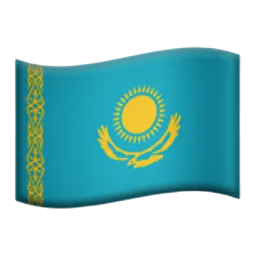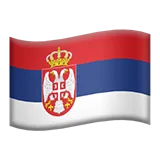Liaisan on Instagram
Liaisan Toropova is a Motion Designer and 3D artist at JetStyle. For a few years now, she’s been developing her own line of digital clothes. For Liaisan, digital fashion is more than a trendy hobby. It’s an amazing way to express herself, create her digital footprint and honor her native Bashkir culture. Liaisan told us about her creative path and highlighted the most interesting facts about digital fashion - and how your brand can use it today to elevate your promotion journey:
Before We Start
What is digital clothes? Basically, it’s clothes created in 3D and sometimes, quite rarely, in 2D. These clothes are worn by avatars, the digital copies of ourselves that we create for digital environments.
When I started my creative project with digital fashion, it wasn’t ‘love at first sight’. Initially I got inspired by a virtual fashion collection by designer Regina Turbina. Regina has been a true visioner, now she owns an NFT market Artisant and collaborates with big brands. But at that time, I thought that it wasn’t worth my attention. My mind was occupied with other things.
For instance, one of my goals has always been to celebrate my national identity. What’s going to happen with it when we evolve a deeper connection with the digital space?
My National Identity
I’m Bashkir. Bashkir is a small, historically nomadic, ethnic group located primarily at the Ural mountains, on the border between Europe and Asia. We are few now, and Bashkir cultural heritage is fading out due to globalization. With increased digitization, we lose our specific features and become similar. It can be so hard to differentiate between people in digital space, don’t you think?
At the same time, we see that Scandinavian or Japanese cultures are thriving worldwide. What if we introduced people to the Bashkir culture and it could earn its well-deserved popularity too?
The Bashkirs originate in the 5th century B.C.. We have our own language, writing, heroic epos, etc. ThHe main character of the latter travels on a lion and a winged horse, fights snakes, evil spirits and the Death itself. It's an immense creative potential that I’d felt so eager to use.
Even though in my childhood I had troubles accepting my national identity, now I know for sure that instead of feeling embarrassed of it, I should be proud and celebrate its magnificence.
There’s a lot to be proud of. I happen to have two famous family members, one of them – the national Bashkir hero Surash-batyr. My great-grandfather Askhat Galimov started a teacher training college in his village and heroically died during WWII at the age of 39.
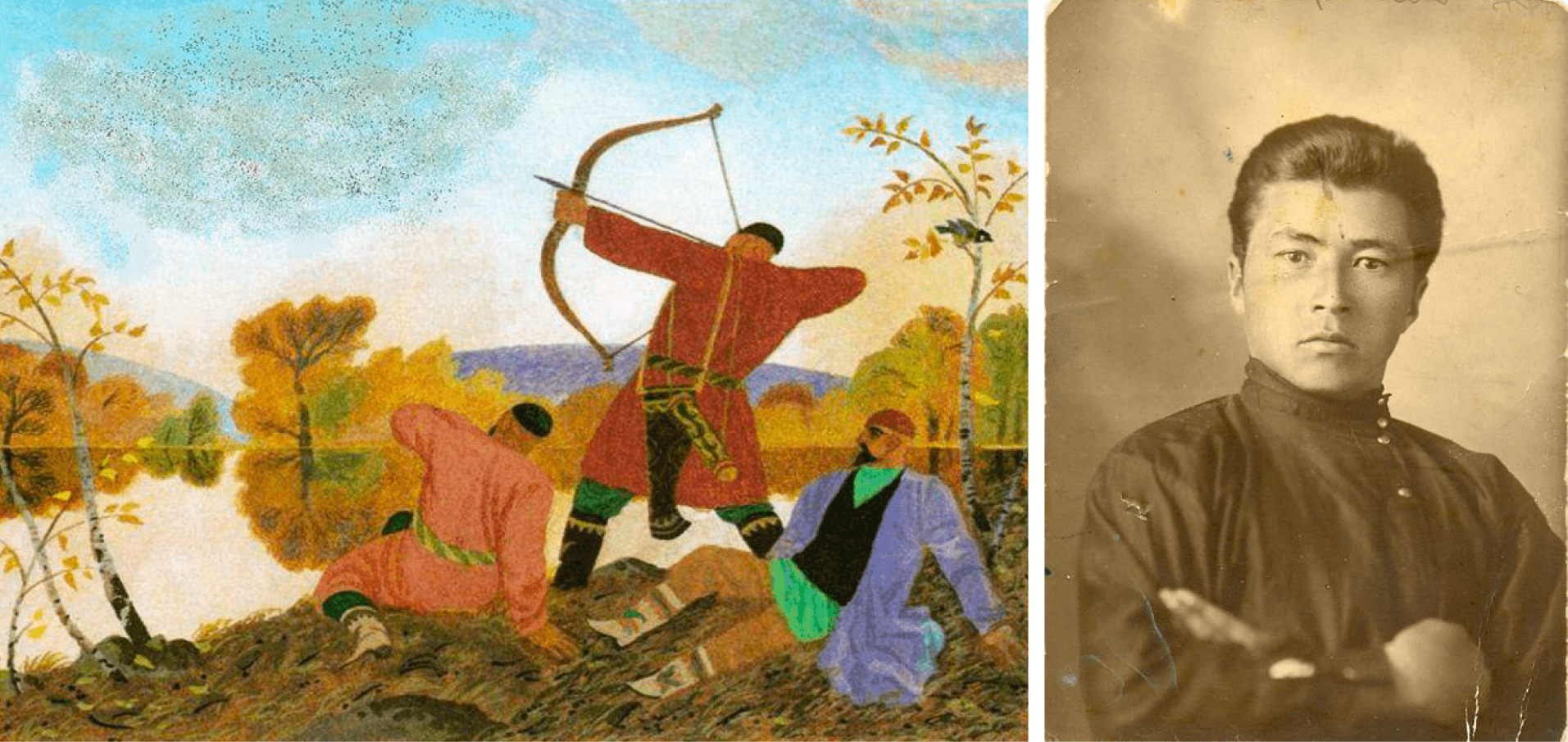
Once I participated in a themed photoshoot wearing a national costume. On the left you can see a Tatar (a related ethnic group) cap called kalfak – it belonged to my great-grandmother and it’s over 100 years.

When I uploaded the photo on my social media, I received incredibly emotional feedback: people were inspired by my example and thrilled to start researching their own cultural background. It seems like everyone wants to know where they come from.
I’ve always been fascinated by myths, and I created art inspired by Bashkir ethnic myths. Here’s one about Azhdaha, a mythical snake shapeshifting into a woman. At that time I didn’t do digital clothes, so I simply added a piece of cloth.

I had an idea: what if I could create digital clothes with some kind of historical ‘Easter eggs’?
It all worked out quite spontaneously.
I was experimenting with the physics of chains in Cinema 4D and in the process noticed that the chains reminded me of a typical Bashkir neck decoration. I decided to create a cap using this item – caps with national elements were trendy at that moment. So I modeled a cap, folded the chains up and fixated them on the cap peak.
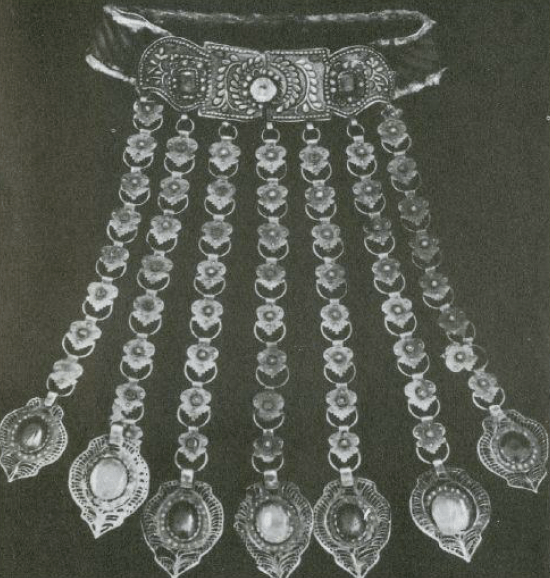
There was a lot of positive feedback on Instagram. I realized: it’s easier to make your point clear through clothes. So I started to combine the digital and the folk.
In my experience, digital art has proved to be the perfect balance between the resources spent and tangible results. Let’s dwell on this some more:
Advantages of digital fashion
1. It saves resources
I’ve tried creating many Bashkir-related items, such as myths illustrations, clothes, interior design items, cartoons. Usually it takes months to create something, e.g. a suit, and eventually it may even turn out unwearable. One of my friends, a clothes designer, shared an insight with me: isn’t it absurd to sew the whole collection while being uncertain if a single item is going to be sold? At the same time, the production process is so labor-consuming – there’s so much to be done before you actually manage to sell your clothes and get profits.
That’s what makes digital fashion different from real-life one. In digital, you can virtually ‘sew’ all the models in 3D, make it fit any body type, present it on virtual models, release the collection, get orders and only after that you’re good to go and sew the real clothes.
Also, a digital fashion collection can become a kind of an audience research: once you upload your collection online, you’re able to collect the audience feedback and change elements of clothes before it is created IRL.
BTW, digital fitting is almost as realistic as the offline one, and they can easily be interchangeable.
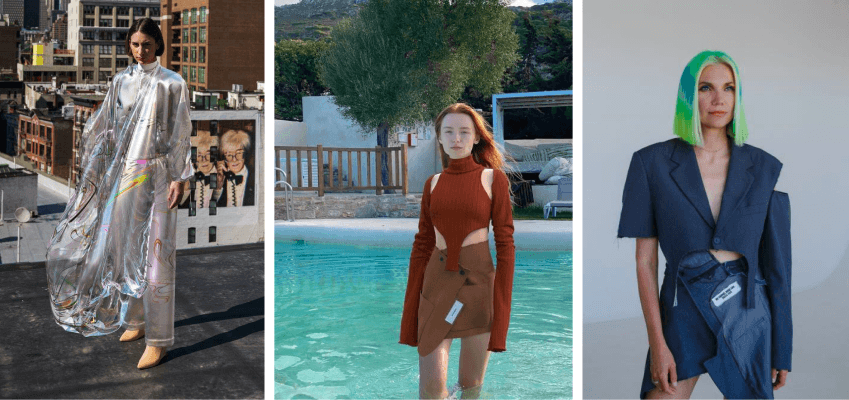
2. Digital fashion can become an extra source of income
Brands sell digital copies of their clothes as NFT. Both small and bigger brands use this opportunity: Ecoolska, small eco-fashion brand, Alexander McQueen, Balenciaga, Uber, etc.
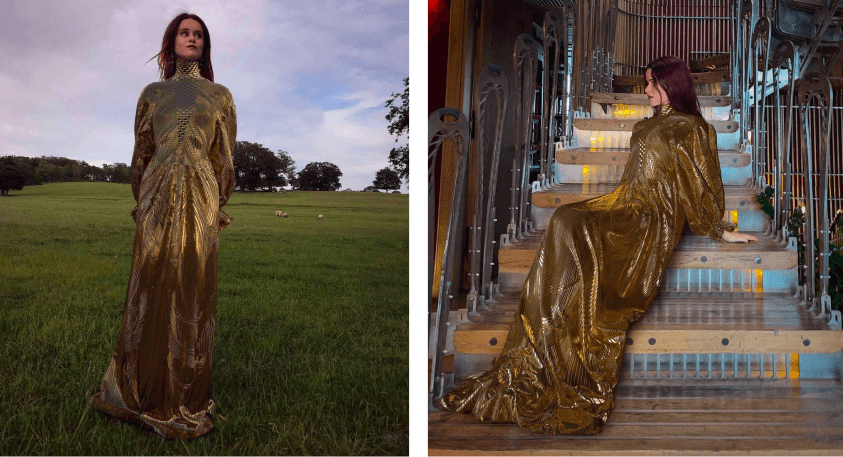
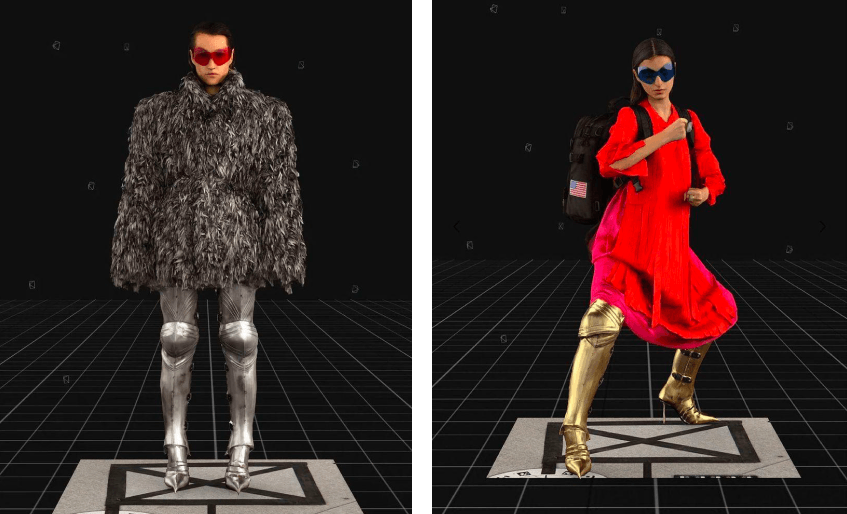
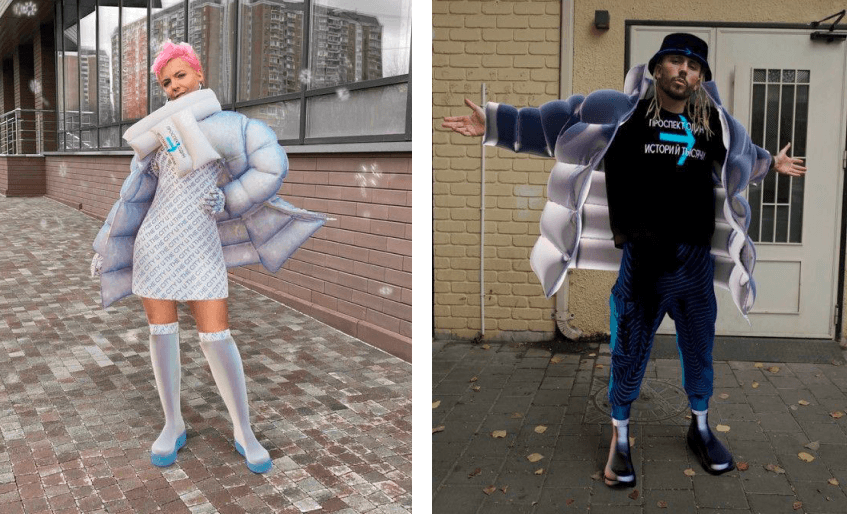
3. Virtual environment is full of creative potential for advertising.
The audience is not tired of digital fashion yet, so brands can use this to step up their advertising game. All special effects at your disposal – burn the clothes, explode it, do whatever your fantasy allows you to.
Brands can also collaborate with artists. For a talented artist, this collaboration is a chance to get an amazing case into their portfolio and become famous. For the brand, it’s a chance to state its position about technologies, arts, ecology.
4. Digital fashion addresses the problem of overconsumption.
You might have heard about fast fashion – people buy too many cheap clothes of bad quality, which become shabby and outdated in a short time. Then people throw them away and the cycle repeats. The same happens with celebrity outfits – they are never worn twice in public. Luxury clothes get burned down, if they are not sold during the collection release period. Brands could contribute to making society waste less clothes.
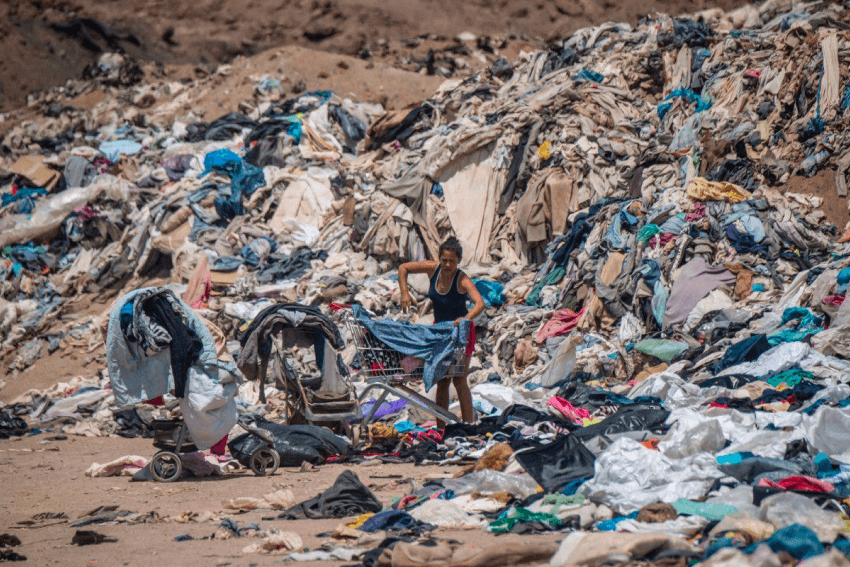
5. Digital clothes are relevant for metaverses.
In short, metaverses are like social networks in VR with extra opportunities for interaction and monetization. People create their digital copies, avatars, to exist in metaverses.
Fortnite is a good example of a computer game with metaverse features. Fashion brands such as Moncler and Balenciaga have created their own collections for the game.
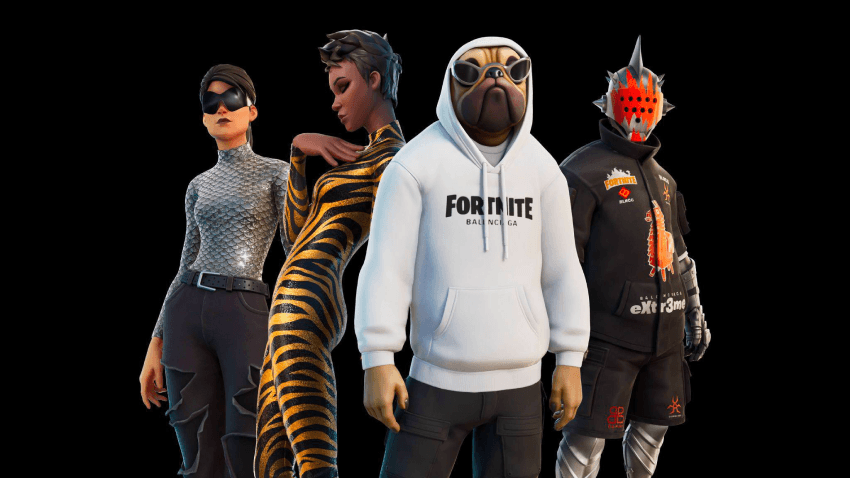
Another metaverse, Decentraland, has recently hosted a digital fashion show by different designers, both globally recognized and new ones. Presence of both categories symbolizes the philosophy of the internet of the future, where everyone has equal opportunities.
Target Audience
Digital clothes are created for digital people, or avatars. The world already knows a few virtual bloggers, Lil Miquela being one of them. She collaborates with famous people, has lots of ad contracts, visits top events and lives the life many would want to have. But my favorite digital character is Trisha – my own avatar. Sometimes she hosts my social media, and wears my clothes.
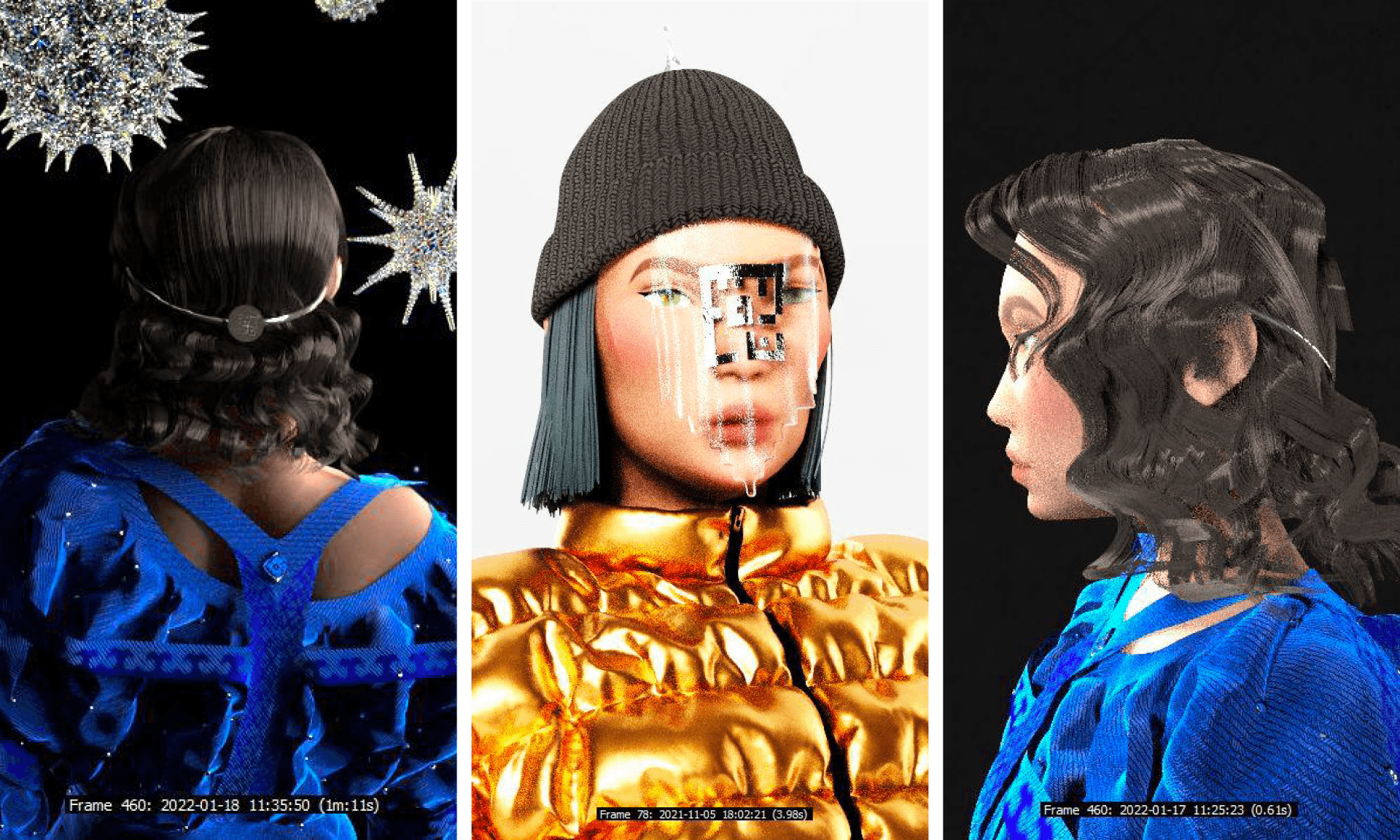
My Digital Collection
I guess digital clothes are not supposed to be only good-looking and impressive, otherwise it will turn into white noise. Clothes should perform a function. In my case, the function is cultural research and creation of the new world for the culture to evolve and live in.
My first digital item is a skirt made of coins. All Bashkir female influencers of the past used to wear lots of coins on their clothes – how’s that for monetization?
The next item is a special type of the cap, also covered with coins and decorated with the spike. This is a reference to the Chuvash and Bashkir helmet-like caps called kashmau.
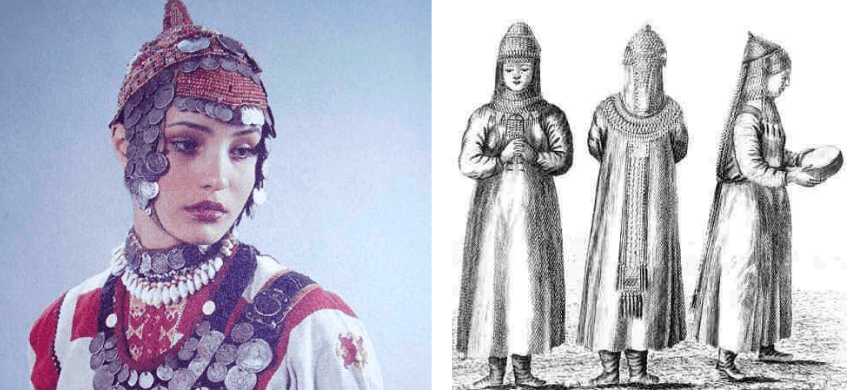
This helmet reminds of times when female nomads used to ride horses and shoot bows.

Third item is another type of headdress, similar to bashlyk, Bashkir for ‘hood’. Bashkir people wore bashlyks during the war with Napoleon. Other nations started to copy the outfit, and now bashlyks are mistakenly thought of as Kazakh’s national clothes.
The tag, the buttons and the triangle above the forehead refer to another Bashkir headdress, kashmau. It was decorated with coins that would drag your head down so that you could have nice posture.

After I finished with it, the cap reminded me of a lizard, so I added a reptile-like texture. That’s a feature unique to digital clothes only: if I was creating this item in real life, I wouldn’t be able to change the fabric at the end of the process just because I felt like it.
I firmly believe that we don’t need to replicate traditional costumes. They can be the basis for further creative process.
Another of my items is a dress with national ornamented shoulder straps and designer hair accessory.
When I researched national decorative elements, I really liked the trend of covering faces. It’s not done due to shyness or decency, it’s magical and even shamanic. It’s still a thing: during fashion shows we can often see models with their faces covered, as it helps to concentrate on the clothes rather than being distracted by the face.
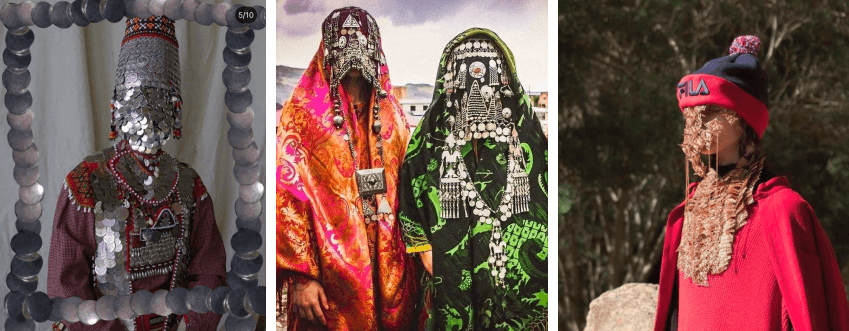
This trend, harsh winter winds and Covid pandemic inspired these face covers.
The symbol on these items is my name in Arabic, stylized with Cufic writing. Why Arabic, you’d ask? Actually, Bashkir writing originates from Arabic. Later it completely changed the writing system to Latin and then Cyrilic.

I also went a bit beyond clothes and created a mythical fantasy nomad tent (yurt) design.
Fitting process
Great news for anyone who’s already thinking about trying on some digital clothes; there are a few awesome apps to do it:
The latter provides an amazing AR solution with body tracking. Snapchat can also be used to upload your own digital items and try on a variety of fashion collections.
Amazon also allows you to try on clothes online. It’s a great way to retrieve offline shops’ market share.
Option No. 3, the most attractive in my opinion, is to connect with the designer and send them your pics. You know where to find me! Click the button above to get to my Instagram account.
In my opinion, the core purpose of digital art is freedom of self-expression, for both individuals and brands.
***
If one of the digital fashion implementations we described above looks attractive to you, and you’d like to discuss it in more detail – let us know. At JetStyle we have an experienced designer team, Liaisan included, who can execute any of your wildest ideas. Let’s chat: orders@jet.style
EXPERT REVIEWS
"The art of Laysan Toropova is dedicated to exploring and preserving the cultures of small nations, including the Bashkir culture. Through her art projects, she allows people to discover the existence of various cultures that coexist with them in Russia. Toropova's works reveal diverse ways of self-expression, using fashion, myths, everyday objects, and calligraphy, which enable the exploration of various forms of national and artistic contexts.
Moreover, her projects have the potential to address issues of overproduction and environmental pollution by utilizing more environmentally responsible materials and techniques. By presenting her art in the form of wearable fashion, Toropova makes it more accessible and understandable to people. Clothing is much closer to people's everyday lives and experiences than abstract works of art."
Aleksei Kuchma
Creator of the "Digital Shkaf" Telegram channel
Expert in digital art
"Laysan Toropova's art demonstrates how art can have a positive impact on social and ecological development and contribute to a deep understanding of cultural diversity. Her work is not only beautiful and aesthetically pleasing, but it is also thought-provoking and socially conscious. By showcasing the cultural richness of small nations, Toropova celebrates diversity and promotes tolerance and understanding among different cultures. Her art is a testament to the power of creativity in advancing social and environmental progress."
Fashion tech media



